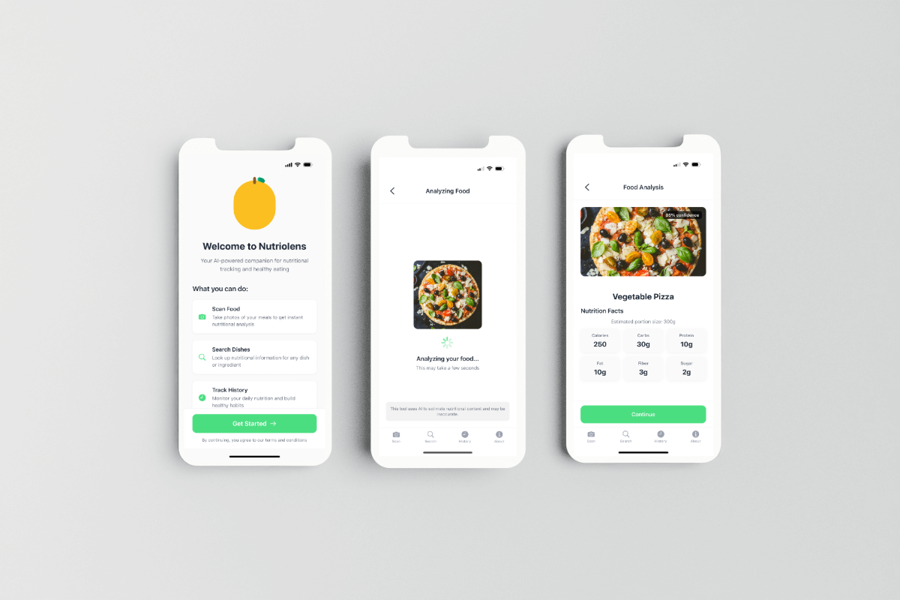
What happens when you bring together your entire team, an ambiguous brief, and a handful of AI tools?
On our latest company day, we set ourselves a challenge: could we take an idea, use AI to speed up the thinking, and produce a working app prototype in just a few hours?
The aim wasn’t to launch something into the app store. In fact, that wasn’t even on our radar. This was about exploring how AI can supercharge our rapid ideation and prototyping process — and seeing what’s possible when every part of the business comes together to collaborate.
By the end of the day, we had two very different prototypes, a heap of insight, and (much to our surprise) the bones of an app that did make it into the store.
Why we did it
Our company days are built around three “Es”: Exploration, Experimentation, and Excellence.
- Exploration → Looking outward at what’s changing in the world, so we stay relevant and ahead of the curve.
- Experimentation → Creating a safe space to play with emerging tools and trends, without the pressure of client delivery.
- Excellence → Bringing it all back to how we deliver quality work for our clients.
For Co-CEO Deborah Fortescue, this session was as much about building team capability as it was about exploring new tools:
“I wanted people to walk away thinking, ‘I didn’t believe we could achieve this in such a short space of time – and we did.'”
To simulate the kind of challenges we face in real projects, Deborah deliberately gave the teams an ambiguous brief and encouraged them to work exactly as they would with a client: ask the right questions, validate assumptions, and deliver something tangible.
How we approached it
To mirror the kind of challenges we face with clients, we deliberately set this up as more than a “build something fast” exercise. The teams had to:
- Interrogate the brief – asking clarifying questions, challenging assumptions, and identifying what success might look like.
- Research the user problem – understanding the day-to-day challenges and needs behind the concept.
- Shape the concept – deciding which features to prioritise for the first version and what could be added later.
- Prototype and present – creating something tangible that could be navigated on a phone and then pitching it back as if to a client panel.
The teams were deliberately mixed, combining developers, designers, strategists, and commercial team members, so each prototype benefited from different perspectives.
Tom, our Director of App Solutions, saw the benefit immediately:
"Exploring how other teams approached rapid prototyping gave us fresh ideas for how to solutionise with clients and prove technical feasibility fast."
The results showed exactly why this matters for real-world projects:
- One prototype wowed with visual impact — an interface you could click through immediately.
- The other impressed with the depth of thinking — a detailed roadmap of how the app could grow in future iterations.
In client work, combining those two strengths gives you both the excitement of an MVP and the reassurance of a solid plan.
The tools & tech
The build for one of the prototypes was led by Felix, our Principal Front End Engineer. His toolkit included:
- Expo React Native for fast cross-platform app builds.
- Cursor with Claude AI for AI-assisted coding and feature generation.
- ChatGPT to quickly create onboarding flows and user-facing copy.
Why does this matter for clients?
- Faster to tangible output – AI-assisted coding reduces the time spent on repetitive or boilerplate tasks.
- Better iteration speed – changes can be made on the fly during a workshop, meaning stakeholders can see updates in real time.
- More realistic testing – rather than just clicking through static screens in Figma, you can hold and use an app that responds to input.
As Felix explains:
"The big difference now is we can put a working prototype in someone’s hand, not just a clickable design."
The trade-off? AI-generated code is designed for speed and demonstration, not long-term maintainability. It’s perfect for discovery and early testing — but when moving to production, we build fresh for robustness, scalability, and quality.
From prototype to app store
The concept our teams worked on became Nutriolens AI Meal Tracker — an app that uses AI to estimate the nutritional value of your meals. By simply typing or taking a photo of what you’ve eaten, the app instantly generates an analysis of calories, protein, carbs, and fat. Users can build meals, view a history of their entries, and track nutritional trends over time.
What began as a demonstration of AI-powered rapid prototyping turned into a polished, working app available in the App Store, proving how quickly an idea can be taken from concept to something you can use in the real world.
Validating what we know works
This exercise didn’t reveal brand new insights; it confirmed and strengthened principles we already follow in our client projects:
AI speeds up creation, but quality still matters.
We’ve always known that speed without structure creates problems later. This session reaffirmed that AI can help get to something testable faster, but we still need to apply our rigorous build standards before a product goes live.
Prototypes are discovery tools, not deliverables.
We regularly use early-stage prototypes to gather user feedback, secure stakeholder buy-in, and shape the product roadmap. This company day proved yet again how valuable that step is — whether for a brand-new idea or an enhancement to an existing product.
Clear use cases mean better outcomes.
We saw firsthand how rapid prototyping works brilliantly in two scenarios:
- Helping startups test viability before seeking funding.
- Enabling established clients to explore new features without risking disruption to their live platform.
Expectation-setting is everything.
Because prototypes look and feel “real,” clients can be tempted to treat them as production-ready. This reminded us of the importance of explaining where prototypes fit in the journey — and why they’re a stepping stone, not the final product.
The client value
For our clients, rapid prototyping isn’t just about building something quickly — it’s about making smarter decisions, reducing risk, and gaining confidence in the right direction.
Here’s how it delivers value:
- Reduce risk by testing ideas with real users before committing significant budget.
- Secure investor or stakeholder buy-in faster with something tangible to demonstrate, rather than abstract concepts.
- Validate user flows and functionality early, so you avoid costly rework later in the project.
- Explore new features for existing products without disrupting your live environment.
Co-CEO Deborah Fortescue explains it simply:
"Client expectations have rightly increased — they want things quicker and delivered more cost-effectively, without compromising quality. This process meets those needs while keeping our standards high."
Whether you’re a startup needing a proof-of-concept for funding or an established business exploring a new digital product, our AI-powered rapid prototyping process gives you clarity, confidence, and evidence to move forward.
Our company day proved something we already knew from client work — rapid prototyping is one of the most powerful ways to turn ideas into actionable plans. It gives you:
- Speed – days instead of months to get something in your hands.
- Clarity – seeing how your idea works in practice, not just on paper.
- Confidence – making informed investment decisions backed by early user feedback.
For startups, that could mean walking into an investor pitch with a working proof-of-concept rather than a slide deck. For established businesses, it’s the ability to test new features without slowing down your current operations.
Our AI-powered rapid prototyping approach blends the energy of quick wins with the discipline of our proven build process. You get to explore ideas quickly, safely, and strategically — with the confidence that when you’re ready to go live, we’ll deliver the same level of excellence we always do.
Have an idea you want to test?
Let’s take you from concept to clickable in record time — so you can see it, share it, and make better decisions about where to take it next.






